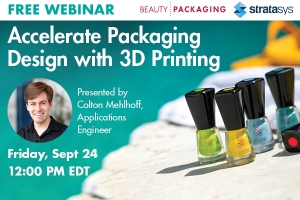Beauty Packaging Staff04.28.20
Skin aging is known to be induced largely by light. As a result, there is an active development going on in the industry to create sunscreen cosmetics aimed at protecting skin by either reflecting or absorbing light that falls within the UV spectrum, the cause of dermal damage.
Zinc oxide (ZnO) and titanium dioxide (TiO2) are widely used as inorganic materials to reflect UV rays. There are, however, drawbacks as these substances cause white cast when applied in their original form due to their high refractive index. They also lead to clumps forming in the formula.
New Sunscreen Technology
Amorepacific has developed a “porous, micro inorganic material platform technology,” which is a white-cast-free solution that reflects UV rays effectively.
Dr. Li Yan from Amorepacific R&D Center Material Lab partnered up with professor Lee Gi-ra and his lab in Sungkyunkwan University Chemical Engineering to conduct a joint research project. Through this study, the team were able to evenly synthesize and assemble micro-sized spherical silica particles that are hollow in the middle.
Park Won-seok, head of Amorepacific R&D Center Foundation Innovation Lab expressed, "The recent research results we have announced are very meaningful as we came to possess a platform technology to develop innovative inorganic materials. We will continue to verify the potential of this platform through clinical trials on skin."
The film produced from these particles can be adjusted to have even air bubble sizes and gaps in between, to be able to reflect visible light and UV spectrum rays. The team also discovered that by matching the refractive index, they were able to more effectively reflect UV rays while still appearing transparent in the visible spectrum. This is similar to the natural mechanism of chameleons or green algae that quickly change their skin color by scattering light.
Zinc oxide (ZnO) and titanium dioxide (TiO2) are widely used as inorganic materials to reflect UV rays. There are, however, drawbacks as these substances cause white cast when applied in their original form due to their high refractive index. They also lead to clumps forming in the formula.
New Sunscreen Technology
Amorepacific has developed a “porous, micro inorganic material platform technology,” which is a white-cast-free solution that reflects UV rays effectively.
Dr. Li Yan from Amorepacific R&D Center Material Lab partnered up with professor Lee Gi-ra and his lab in Sungkyunkwan University Chemical Engineering to conduct a joint research project. Through this study, the team were able to evenly synthesize and assemble micro-sized spherical silica particles that are hollow in the middle.
Park Won-seok, head of Amorepacific R&D Center Foundation Innovation Lab expressed, "The recent research results we have announced are very meaningful as we came to possess a platform technology to develop innovative inorganic materials. We will continue to verify the potential of this platform through clinical trials on skin."
The film produced from these particles can be adjusted to have even air bubble sizes and gaps in between, to be able to reflect visible light and UV spectrum rays. The team also discovered that by matching the refractive index, they were able to more effectively reflect UV rays while still appearing transparent in the visible spectrum. This is similar to the natural mechanism of chameleons or green algae that quickly change their skin color by scattering light.




























